Webster (281) 316-3338
Alvin (281) 331-3525
Webster (281) 316-3338
Alvin (281) 331-3525

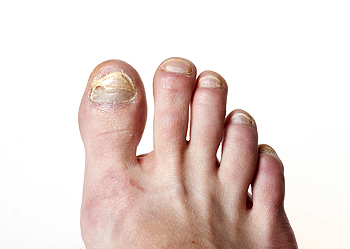 Toenail fungus is a condition that affects approximately 14% of the population. Fungi can be found almost anywhere in our environment, and it is important that you are aware of the different ways you can avoid them. One of the best ways you can prevent toenail fungus is by wearing socks. Some of the best sock fabrics in terms of protecting your feet are nylon, wool, and polypropylene. Another tip is to avoid walking around in wet areas as much as possible, since fungi tend to thrive in moist environments. Anti-fungal powder has also been proven to be beneficial in fighting fungus. The powder works by weakening the cell membrane of the fungus and preventing it from producing ergosterol, an essential part of its structure.
Toenail fungus is a condition that affects approximately 14% of the population. Fungi can be found almost anywhere in our environment, and it is important that you are aware of the different ways you can avoid them. One of the best ways you can prevent toenail fungus is by wearing socks. Some of the best sock fabrics in terms of protecting your feet are nylon, wool, and polypropylene. Another tip is to avoid walking around in wet areas as much as possible, since fungi tend to thrive in moist environments. Anti-fungal powder has also been proven to be beneficial in fighting fungus. The powder works by weakening the cell membrane of the fungus and preventing it from producing ergosterol, an essential part of its structure.
For more information about treatment, contact Dr. Douglas Webb of Texas. Our doctor can provide the care you need to keep you pain-free and on your feet.
Toenail Fungus Treatment
Toenail fungus is a condition that affects many people and can be especially hard to get rid of. Fortunately, there are several methods to go about treating and avoiding it.
Antifungals & Deterrence
Oral antifungal medicine has been shown to be effective in many cases. It is important to consult with a podiatrist to determine the proper regiment for you, or potentially explore other options.
Applying foot powder on the feet and shoes helps keep the feet free of moisture and sweat.
Sandals or open toed shoes – Wearing these will allow air movement and help keep feet dry. They also expose your feet to light, which fungus cannot tolerate. Socks with moisture wicking material also help as well.
If you have any questions please feel free to contact one of our offices located in Alvin and Webster, TX . We offer the newest diagnostic tools and technology to treat your foot and ankle needs.
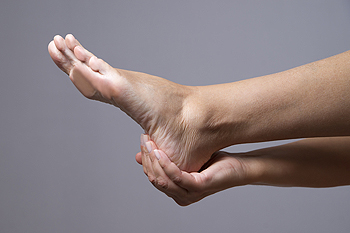 Plantar fasciitis occurs when the plantar fascia in your foot becomes inflamed. The plantar fascia is a long ligament that runs along the bottom of your foot, providing it with structural support. Plantar fasciitis pain is usually felt early in the morning and tends to go away as the day goes on. Common treatment methods for the condition are rest, ice, and arch supports. In some cases, none of these at-home treatments may be effective, so it is important that you see a podiatrist if this is the case for you.
Plantar fasciitis occurs when the plantar fascia in your foot becomes inflamed. The plantar fascia is a long ligament that runs along the bottom of your foot, providing it with structural support. Plantar fasciitis pain is usually felt early in the morning and tends to go away as the day goes on. Common treatment methods for the condition are rest, ice, and arch supports. In some cases, none of these at-home treatments may be effective, so it is important that you see a podiatrist if this is the case for you.
Plantar fasciitis can be very painful and inconvenient. If you are experiencing heel pain or symptoms of plantar fasciitis, contact Dr. Douglas Webb from Texas. Our doctor can provide the care you need to keep you pain-free and on your feet.
What Is Plantar Fasciitis?
Plantar fasciitis is the inflammation of the thick band of tissue that runs along the bottom of your foot, known as the plantar fascia, and causes mild to severe heel pain.
What Causes Plantar Fasciitis?
How Can It Be Treated?
While very treatable, plantar fasciitis is definitely not something that should be ignored. Especially in severe cases, speaking to your doctor right away is highly recommended to avoid complications and severe heel pain. Your podiatrist can work with you to provide the appropriate treatment options tailored to your condition.
If you have any questions please feel free to contact one of our offices located in Alvin and Webster, TX . We offer the newest diagnostic and treatment technologies for all your foot and ankle needs.
The plantar fascia is a connective tissue in the heel that stretches across the bottom length of your foot. Plantar fasciitis occurs when the connective tissue becomes inflamed, causing heel pain and discomfort during physical activity. Although the condition is completely treatable, traditional methods can take up to a year to start becoming effective.
Plantar fasciitis is caused by a number of everyday activities, so understanding the condition is important for managing and treating it. One of the most common causes of plantar fasciitis is excessive running, especially with improper fitting or non-supportive shoes. Too much exercise can lead to the plantar fascia being overworked and overstretched, which can cause tears in the tissue. Along with improper fitting shoes, pronation, the rolling of the feet inward, is a common cause of plantar fasciitis. If not treated properly, the plantar fascia becomes overstretched and starts to tear, causing inflammation.
Despite the common causes of plantar fasciitis, there are many different treatment options. For less severe cases, conservative home remedies include taking anti-inflammatory drugs to alleviate pain, applying ice packs to the bottom of your foot and heel, slowly stretching and exercising your feet to re-strengthen the tissue, and using orthotic devices are all ways to help manage your plantar fasciitis.
For more severe cases, shockwave therapy has become a common solution for plantar fasciitis. Shockwave therapy can effectively break up the tissue on the bottom of your foot which facilitates healing and regeneration. This fights the chronic pain caused by plantar fasciitis. Even if this doesn’t work, surgery is always a final option. Surgery on the tissue itself can be done to permanently correct the issue and stop the inflammation and pain in your heels.
No matter what the case may be, consulting your podiatrist is the first and best step to recovery. Even the slightest amount of heel pain could be the first stage of plantar fasciitis. Untreated symptoms can lead to the tearing and overstretching of tissue. Because the tearing of tissue can be compounded if it remains ignored, it can evolve into a severe case. The solution is early detection and early treatment. Talk to your podiatrist about the possibilities of plantar fasciitis if you’re experiencing heel pain.
 Improper diagnosis is common among sufferers of tarsal tunnel syndrome. Tarsal tunnel syndrome occurs when the tibial nerve, located in the tarsal tunnel experiences compression from injuries like ankle sprains or from conditions such as flat feet. Those who suffer from tarsal tunnel syndrome are often misdiagnosed with another foot injury, such as plantar fasciitis. With careful examination by a podiatrist, tarsal tunnel syndrome can be properly identified and treated.
Improper diagnosis is common among sufferers of tarsal tunnel syndrome. Tarsal tunnel syndrome occurs when the tibial nerve, located in the tarsal tunnel experiences compression from injuries like ankle sprains or from conditions such as flat feet. Those who suffer from tarsal tunnel syndrome are often misdiagnosed with another foot injury, such as plantar fasciitis. With careful examination by a podiatrist, tarsal tunnel syndrome can be properly identified and treated.
Tarsal tunnel syndrome can be very uncomfortable to live with. If you are experiencing tarsal tunnel syndrome, contact Dr. Douglas Webb of Texas. Our doctor can provide the care you need to keep you pain-free and on your feet.
Tarsal Tunnel Syndrome
Tarsal tunnel syndrome, which can also be called tibial nerve dysfunction, is an uncommon condition of misfiring peripheral nerves in the foot. The tibial nerve is the peripheral nerve in the leg responsible for sensation and movement of the foot and calf muscles. In tarsal tunnel syndrome, the tibial nerve is damaged, causing problems with movement and feeling in the foot of the affected leg.
Common Cause of Tarsal Tunnel Syndrome
The Effects of Tarsal Tunnel Syndrome
A physical exam of the leg can help identify the presence of tarsal tunnel syndrome. Medical tests, such as a nerve biopsy, are also used to diagnose the condition. Patients may receive physical therapy and prescriptive medication. In extreme cases, some may require surgery.
If you have any questions please feel free to contact one of our offices located in Alvin and Webster, TX . We offer the newest diagnostic and treatment technologies for all your foot and ankle needs.
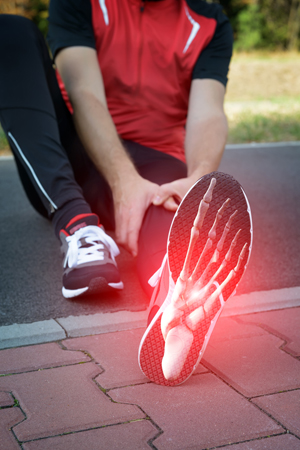 If you are a runner, there are certain rules that you should follow in order to prevent yourself from becoming injured. One of the most important things you can do is to wear shoes that fit properly, and to use shoe inserts when necessary. Proper shoes will help correct foot-motion issues that could potentially lead to injury. Another tip is to pay attention to any pain you are experiencing in your feet. If you sense that there is a pain in your feet, you should take a break and figure out what is going on so that you can treat it.
If you are a runner, there are certain rules that you should follow in order to prevent yourself from becoming injured. One of the most important things you can do is to wear shoes that fit properly, and to use shoe inserts when necessary. Proper shoes will help correct foot-motion issues that could potentially lead to injury. Another tip is to pay attention to any pain you are experiencing in your feet. If you sense that there is a pain in your feet, you should take a break and figure out what is going on so that you can treat it.
Exercising your feet regularly with the proper foot wear is a great way to prevent injuries. If you have any concerns about your feet, contact Dr. Douglas Webb of Texas. Our doctor will treat your foot and ankle needs.
How to Prevent Running Injuries
Many common running injuries are caused by overuse and overtraining. When the back of the kneecap starts wearing out and starts causing pain in your knee, this is commonly referred to as runner’s knee. Runner’s knee is a decrease in strength in your quadriceps and can occur if you’re not wearing properly fitted or supporting shoes. To prevent runner’s knee, focusing on hip strengthening is a good idea, as well as strengthening your quads to keep the kneecaps aligned.
What Are Some Causes of Running Injuries?
- One cause of a common running injury is called iliotibial band syndrome.
- Plantar fasciitis is also another common injury.
- Stress fractures can occur from overtraining, lack of calcium, or even your running style.
Best Ways to Prevent Running Injuries
- Wear footwear that fits properly and suits your running needs.
- Running shoes are the only protective gear that runners have to safeguard them from injury.
- Make a training schedule. Adding strengthening exercises as well as regular stretching can help keep you strong and limber and can lessen the possibility of injuries.
- Stretching keeps muscles limber; this will help you gain better flexibility.
If you have any questions please feel free to contact one of our offices located in Alvin and Webster, TX . We offer the newest diagnostic and treatment technologies for all your foot and ankle needs.
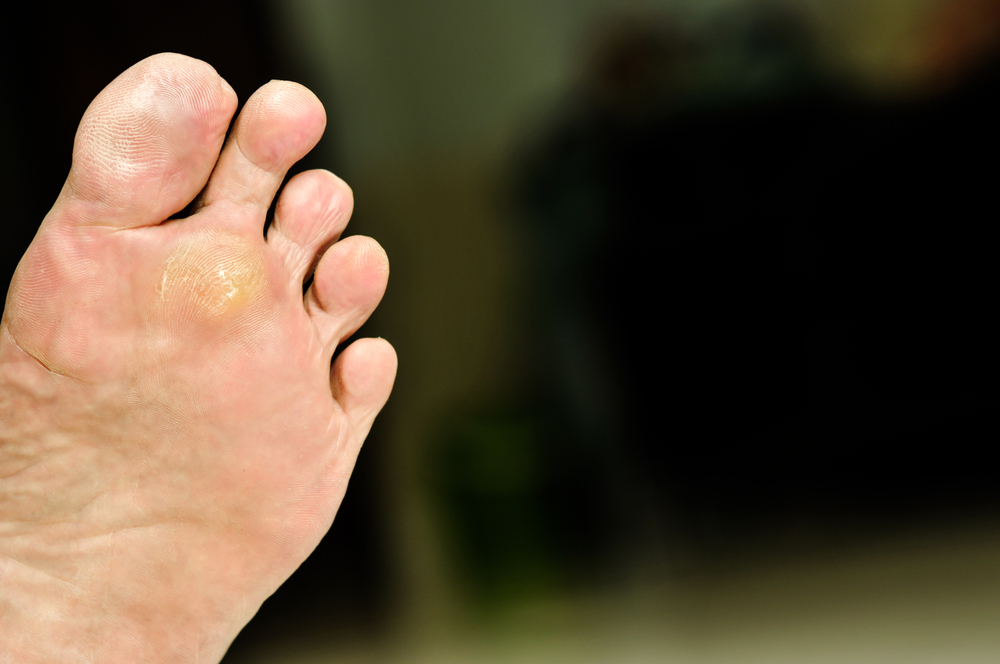 Plantar warts are usually caused by walking around with bare feet in the warmer months. It is very common for warts to appear on the bottom of the foot, however it is possible for them to grow anywhere on the body. They can appear in different shapes, and may even appear in a clustered form. While there are a variety of ways that one can treat warts, the most traditional method is to undergo surgery. Warts can be very painful considering they often appear on the feet which bare most of the body’s weight. If a plantar wart goes untreated, it can become difficult to exercise and perform daily activities.
Plantar warts are usually caused by walking around with bare feet in the warmer months. It is very common for warts to appear on the bottom of the foot, however it is possible for them to grow anywhere on the body. They can appear in different shapes, and may even appear in a clustered form. While there are a variety of ways that one can treat warts, the most traditional method is to undergo surgery. Warts can be very painful considering they often appear on the feet which bare most of the body’s weight. If a plantar wart goes untreated, it can become difficult to exercise and perform daily activities.
Plantar warts can be very uncomfortable. If you need your feet checked, contact Dr. Douglas Webb from Texas. Our doctor will assist you with all of your foot and ankle needs.
About Plantar Warts
Plantar warts are the result of HPV, or human papillomavirus, getting into open wounds on the feet. They are mostly found on the heels or balls of the feet.
While plantar warts are generally harmless, those experiencing excessive pain or those suffering from diabetes or a compromised immune system require immediate medical care. Plantar warts are easily diagnosed, usually through scraping off a bit of rough skin or by getting a biopsy.
Symptoms
Treatment
To help prevent developing plantar warts, avoid walking barefoot over abrasive surfaces that can cause cuts or wounds for HPV to get into. Avoiding direct contact with other warts, as well as not picking or rubbing existing warts, can help prevent the further spread of plantar warts. However, if you think you have developed plantar warts, speak to your podiatrist. He or she can diagnose the warts on your feet and recommend the appropriate treatment options.
If you have any questions please feel free to contact one of our offices located in Alvin and Webster, TX . We offer the newest diagnostic and treatment technologies for all your foot and ankle needs.
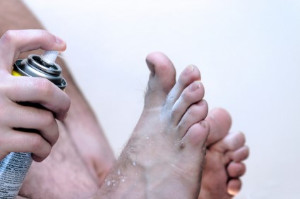 Athlete's foot is an extremely contagious fungal infection that should be treated as soon as it is diagnosed. Many people who have the condition experience itchiness and dryness around their toes, and try to treat it using powder; however, this method isn’t always successful. Athlete’s foot can be tricky to treat, and it may worsen if it becomes irritated due to excessive scratching. Nevertheless, one of the main reasons why people aren’t able to get rid of their athlete’s foot is because they fail to treat their shoes along with their feet. Your footwear can be disinfected by spraying towels with Lysol, and stuffing them inside each shoe. If you leave the towels in overnight, the fungus should be gone by morning.
Athlete's foot is an extremely contagious fungal infection that should be treated as soon as it is diagnosed. Many people who have the condition experience itchiness and dryness around their toes, and try to treat it using powder; however, this method isn’t always successful. Athlete’s foot can be tricky to treat, and it may worsen if it becomes irritated due to excessive scratching. Nevertheless, one of the main reasons why people aren’t able to get rid of their athlete’s foot is because they fail to treat their shoes along with their feet. Your footwear can be disinfected by spraying towels with Lysol, and stuffing them inside each shoe. If you leave the towels in overnight, the fungus should be gone by morning.
Athlete’s foot is an inconvenient condition that can be easily reduced with the proper treatment. If you have any concerns about your feet and ankles, contact Dr. Douglas Webb from Texas. Our doctor will treat your foot and ankle needs.
Athlete’s Foot: The Sole Story
Athlete's foot, also known as tinea pedis, can be an extremely contagious foot infection. It is commonly contracted in public changing areas and bathrooms, dormitory style living quarters, around locker rooms and public swimming pools, or anywhere your feet often come into contact with other people.
Solutions to Combat Athlete’s Foot
Athlete’s foot can cause many irritating symptoms such as dry and flaking skin, itching, and redness. Some more severe symptoms can include bleeding and cracked skin, intense itching and burning, and even pain when walking. In the worst cases, Athlete’s foot can cause blistering as well. Speak to your podiatrist for a better understanding of the different causes of Athlete’s foot, as well as help in determining which treatment options are best for you.
If you have any questions please feel free to contact one of our offices located in Alvin and Webster, TX . We offer the newest diagnostic and treatment technologies for all your foot and ankle needs.